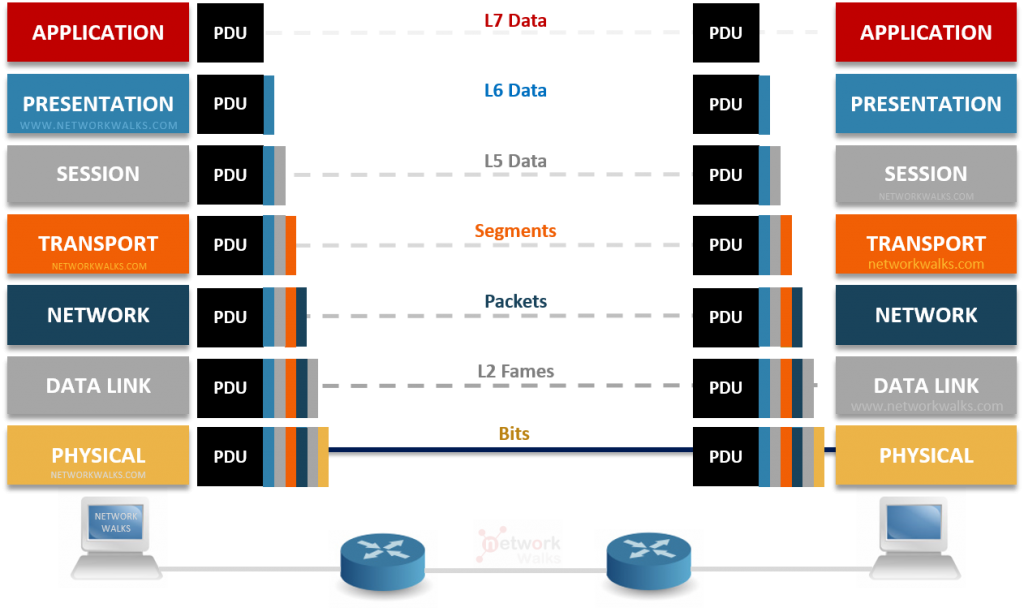 “OSI Model (Open Systems Interconnection Model) is a reference tool and a reference model for data communications in networks”. It was the first conceptual model for standardized communication in computer Network systems.
“OSI Model (Open Systems Interconnection Model) is a reference tool and a reference model for data communications in networks”. It was the first conceptual model for standardized communication in computer Network systems.
Why do we need OSI Model?
We need OSI Model for solution to our multiple problems; few of them are described here. Firstly, it is a vendor neutral model. Before OSI Model, each vendor had to use its own network model to manufacture network equipment. So, one vendor’s equipment & the network was not compatible with another vendor’s equipment. Clients and buyers were forced to buy all equipment from only one vendor. For example, if you buy one HP server then you were bound to buy all network equipment from HP as well in the future. Because HP servers could not be connected by other vendor Switches and Routers. You must buy HP switches to connect them. They will not work with Juniper Servers or Cisco Switches. This problem was resolved with the arrival of OSI Model by International Organization for Standardization (ISO) 1984. This model now provides us the required flexibility along with the standardization.
This problem was resolved with the arrival of OSI Model by International Organization for Standardization (ISO) 1984. This model now provides us the required flexibility along with the standardization.
Modular Nature of OSI Model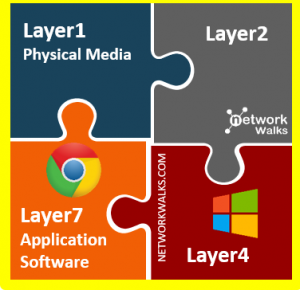
In addition to being vendor neutral, this model is important because it has modular nature. Different companies can work on different parts of network and then combine them together to form a fully functional network.
With this approach, one vendor can create application software like Google Chrome & other can manufacture operating system like windows 10 which supports transport layer. Then HP can combine these two different parts together to manufacture their laptops for public users & all works perfectly. This was not possible before this kind of structure model.
Layers in OSI Model
There are total 7 layers in the OSI Model which are shown in below figure. This layered model helps to simplify the network communication processes. Each layer works for its upper layer. We will discuss all these layers one by one but first we need to understand the overall concept. These seven layers start from from Physical Layer (Layer1) up to Application Layer (layer7) or vice versa.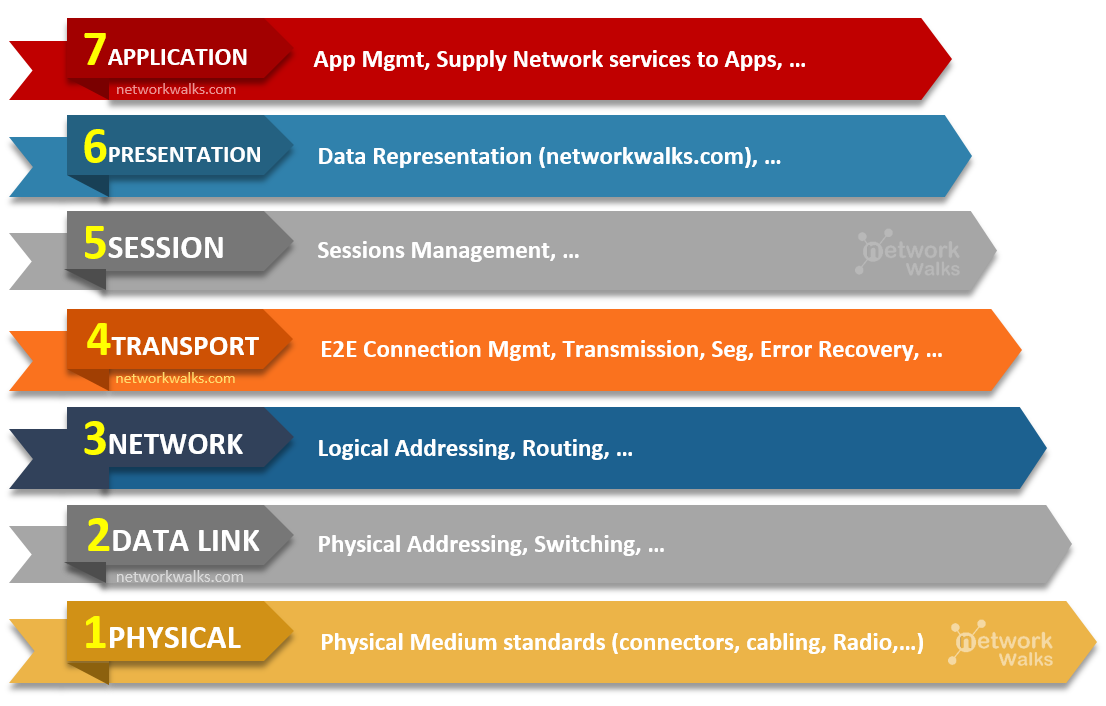 Physical Layer is responsible for standardization of the physical medium which is obvious from its name. In other words, we can say that it standardizes almost everything which we can touch & feel like voltage levels, USB ports and RJ45. Physical Layer has been explained in detail here Data Link Layer is responsible for physical addressing (MAC addresses) and Switching. Network Layer is the third layer and it deals with logical addressing and routing.
Transport Layer is the 4th layer & it is responsible for error-free data transmission across networks. Transport Layer has two important protocols i.e. TCP & UDP; we will discuss TCP/UDP in detail in later sections. Session Layer is responsible for session control. It helps us to manage on how to initiate, control and end conversations between two network devices. Presentation Layer handles data organization & conversion so that it is readable by the Application layer. Application Layer deals with actual applications and end user processes.
Physical Layer is responsible for standardization of the physical medium which is obvious from its name. In other words, we can say that it standardizes almost everything which we can touch & feel like voltage levels, USB ports and RJ45. Physical Layer has been explained in detail here Data Link Layer is responsible for physical addressing (MAC addresses) and Switching. Network Layer is the third layer and it deals with logical addressing and routing.
Transport Layer is the 4th layer & it is responsible for error-free data transmission across networks. Transport Layer has two important protocols i.e. TCP & UDP; we will discuss TCP/UDP in detail in later sections. Session Layer is responsible for session control. It helps us to manage on how to initiate, control and end conversations between two network devices. Presentation Layer handles data organization & conversion so that it is readable by the Application layer. Application Layer deals with actual applications and end user processes.
Upper and Lower Layers
We can also divide these 7 layers into two major groups:
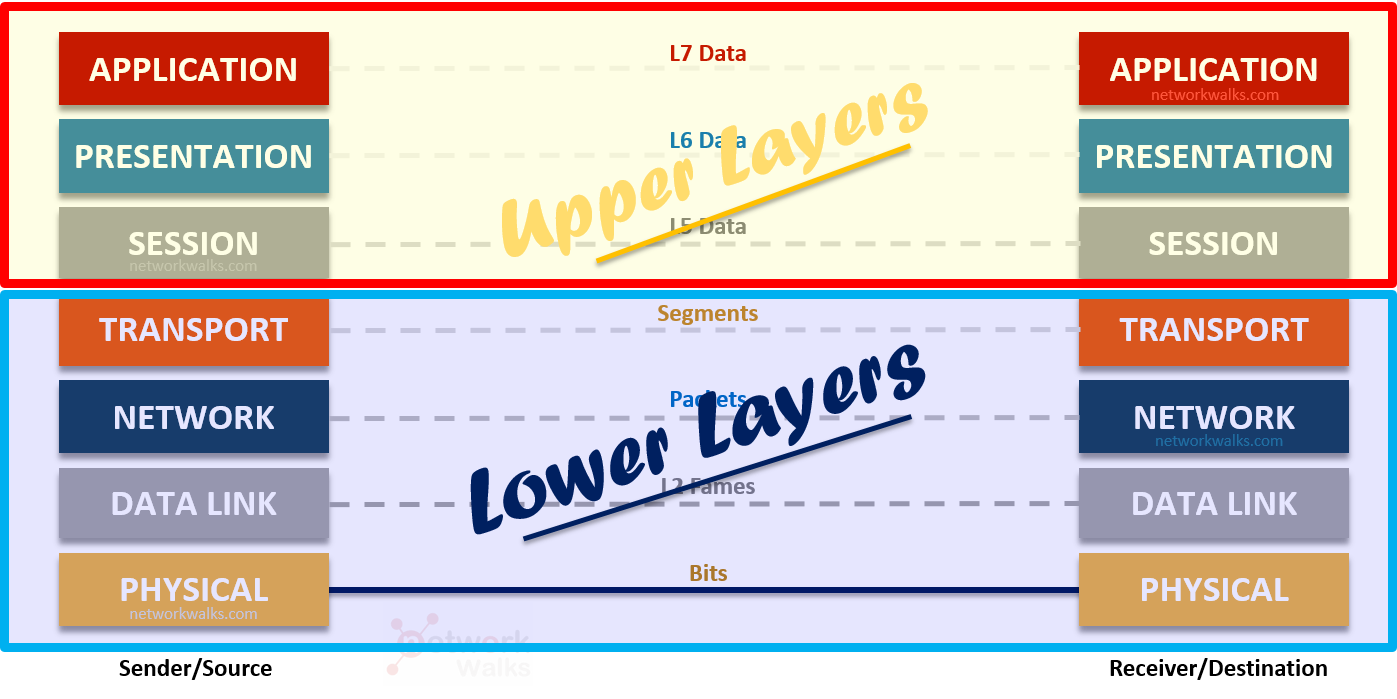
Lower/Media Layers (Layer 1-4) deal with networking. They layers mainly handle data transport issues. These layers are implemented in both hardware and software.
Upper/Host layers (Layer 5-7) are mainly responsible for dealing with applications.

PDU’s in OSI Model
The name and shape of data unit changes as it moves from one layer to the next one due to addition or removal of overheads. Below diagram shows the name of these Protocol Data Units on each layer.
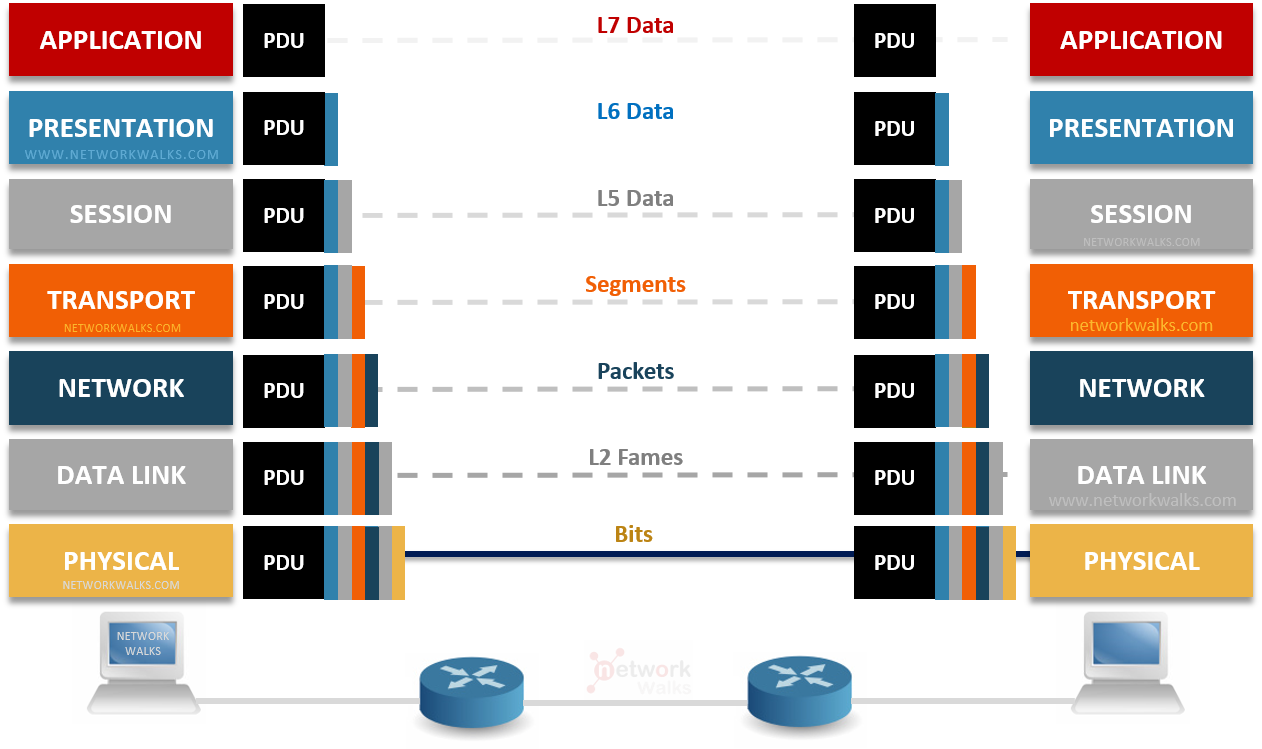

Note: Although OSI is the most famous model but the actual model in practice is TCP/IP Model
How does OSI Model work?
Each Layer in OSI serves the layer above it. Data flow occurs between layers through Encapsulation & Decapsulation. When data is passed from application layer and moves downwards till physical layer then this process is called as ‘Encapsulation’. ‘Decapsulation’ is exactly the reverse of this process. Layers cannot be skipped in this process. Encapsulation and Decapsulation processes can be best understood with the help of below example.Example
Below example shows a real world analogy of posting a letter to a friend through postal services. This is exactly similar to the below 7 steps mentioned in this figure below: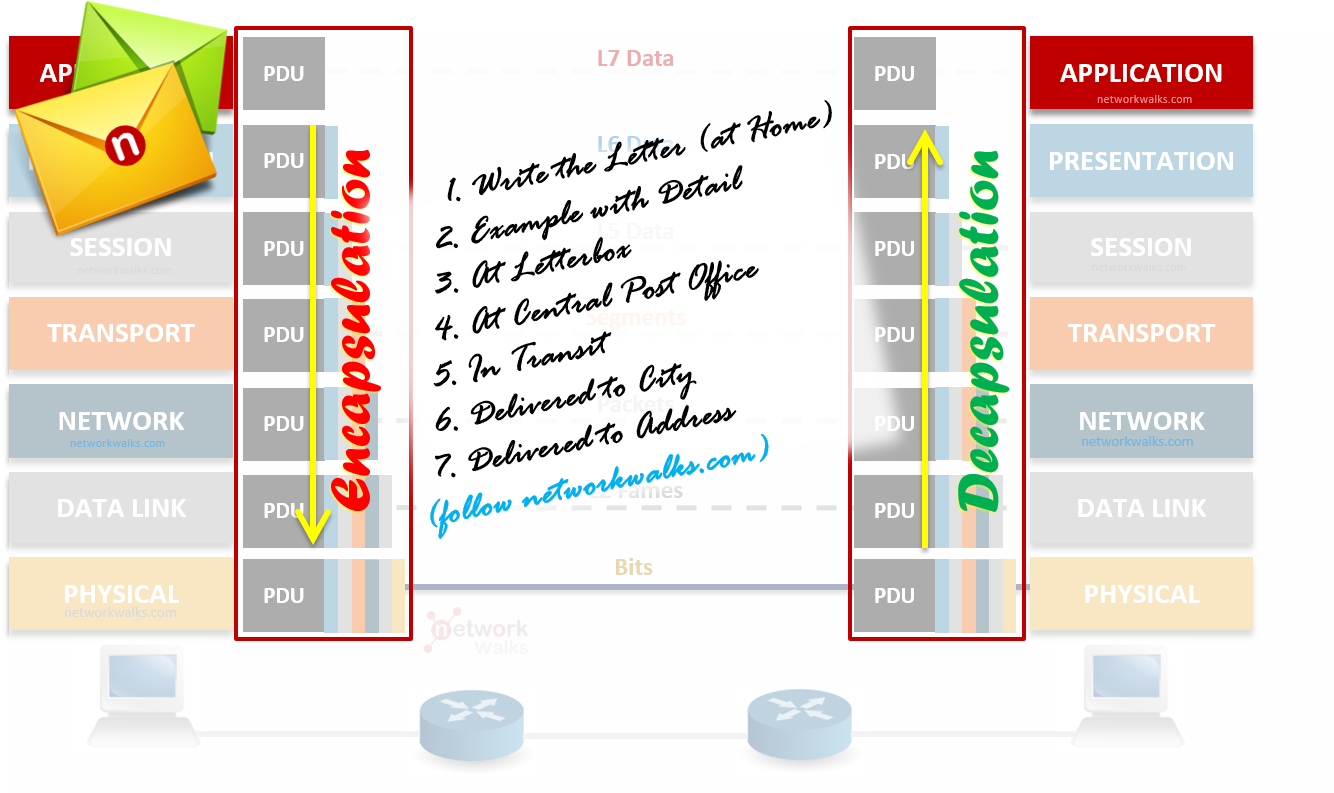
OSI Model Protocols
Every layer of OSI Model has some protocols associated with it. For example, DNS is a protocol which is used for naming of domains and it belongs to application layer. Below are some of the protocols associated with each layer: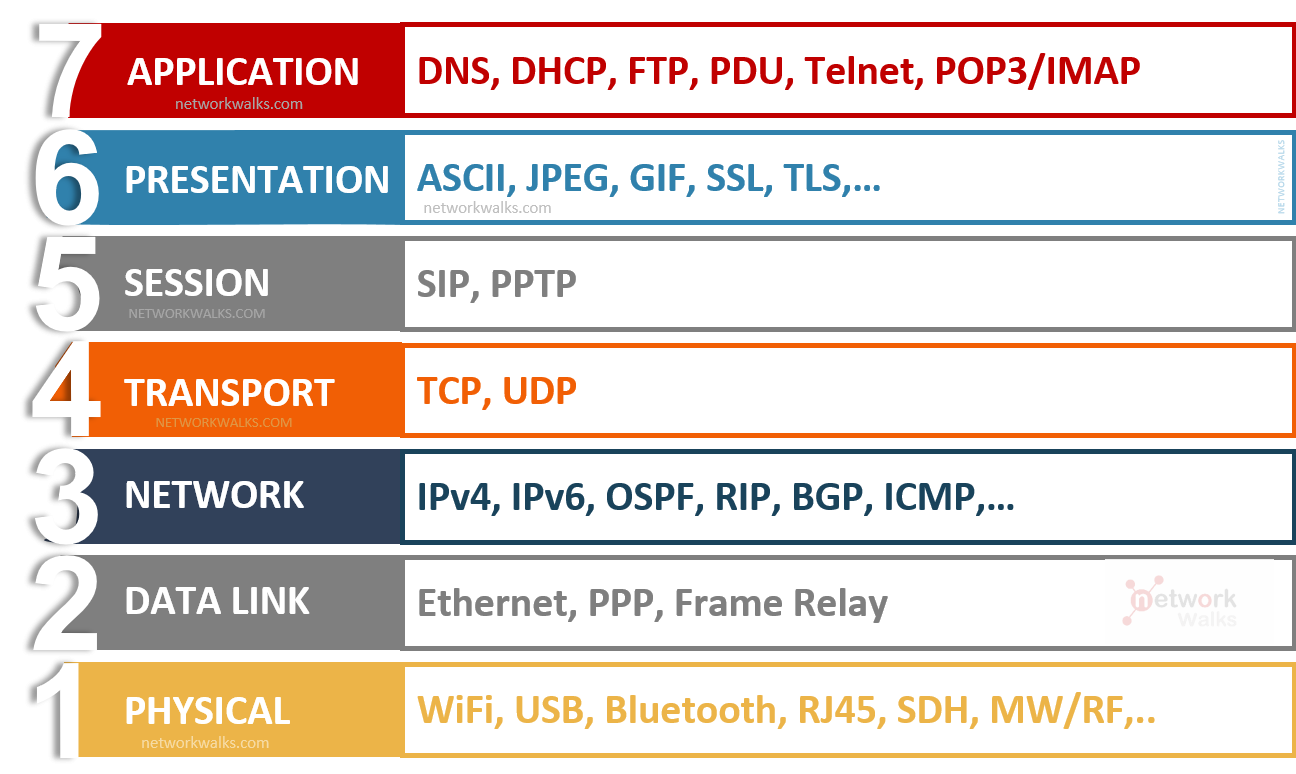
OSI Model Devices
Every layer of OSI Model has some devices associated with it. For example, Router is a device which is used for data routing and it belongs to Network layer of OSI Model. Below are some of the devices associated with each layer of OSI Model: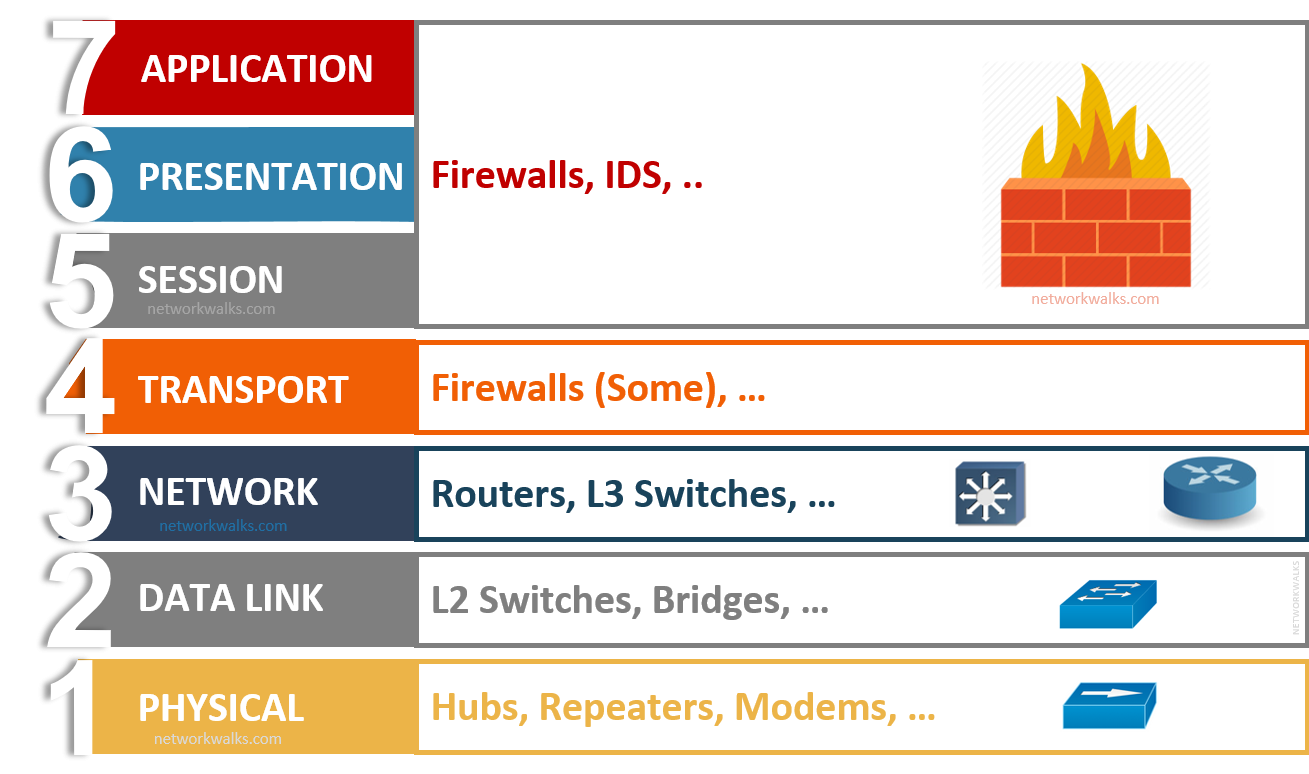
How to remember Layer Names?
It is difficult to remember all layer names of OSI Model and TCP/IP Model. These names can be remembered by memorizing some interesting phrases. Simply remember the first letter of each word as shown in below: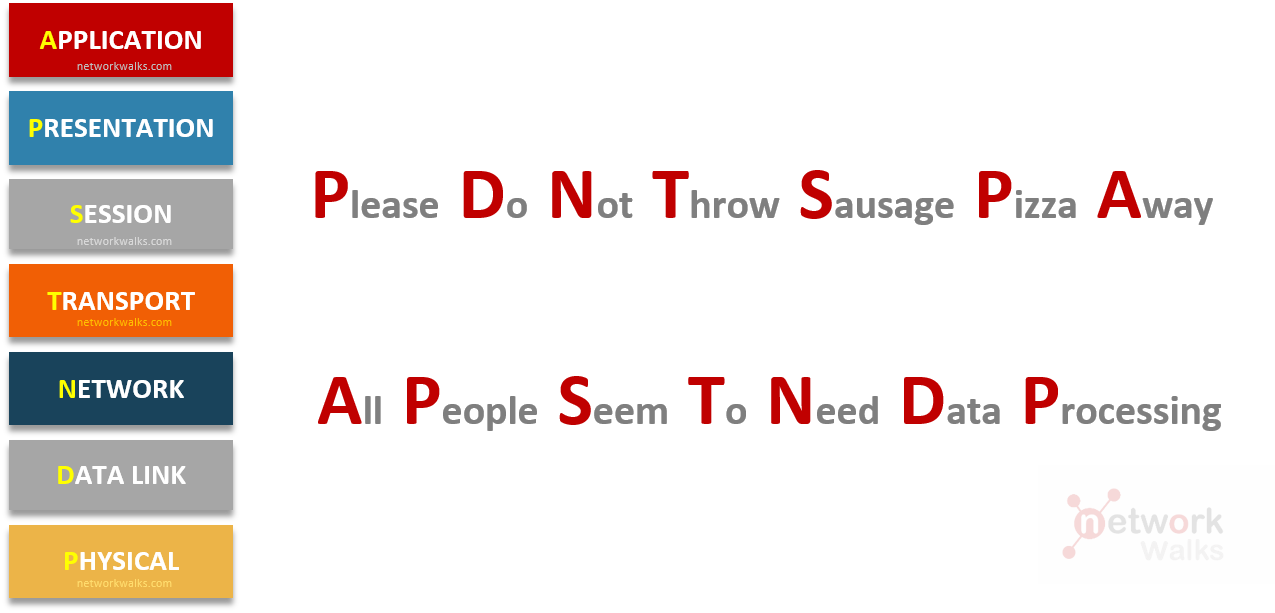
Summary
The OSI Model is a conceptual framework which is used to describe the functions of a networking system. The actual model in practice today is TCP/IP Model while OSI model is used only for reference purposes. It was developed by ISO. It consists of 7 layers. Each of these layers are responsible for some duties. Each of these seven layers has some protocols & equipment associated with it.
Now, test your knowledge on OSI Model using our free Quizzes & Cheat sheet resources for long term memory:
Networkwalks Summary Cheatsheets
Free Online Quizzes (Best for Cisco CCNA, Huawei HCNA, N+)Follow our Facebook Page & YouTube Channel for more updated Cheatsheets & Quizzes:

My Instructor! Well elaborated sir! Surely its easier to memorise those 7 layers now because throw sauce pizza away. Thank you sir!